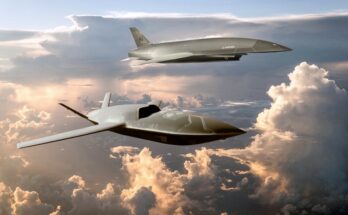
Marine Corps officials have outlined foundational force structure adjustments in preparation for conflicts in the years ahead, and the service’s latest budget request scales back a handful of acquisition programs that no longer align with its top priorities.
The service will begin divesting some legacy equipment that is not well suited to near-peer conflicts. The move is also intended to reduce long-term maintenance costs for the service as a whole. Specifically, the Marines are divesting Mine Resistant Ambush Protected (MRAP) vehicles, Amphibious Assault Vehicles, and the Air Defense Radar.
One of the programs that took a hit in the Marine Corps budget was the Joint Light Tactical Vehicle program, which was also scaled back in the Army’s budget request. The Marines are asking for 752 JLTVs in FY21, rather than 1,065 as previously planned. A total of 3,780 vehicles are funded between FY21 and FY25. Compared to the FY20 outlook, the new budget cuts 1,092 vehicles between FY21 and FY25. Budget documents currently show total procurement of 7,559 vehicles, but the Marine Corps has said it could ultimately increase its acquisition objective to 9,091 vehicles. The Army may eventually reduce its overall JLTV buy, as the requirement for the armored truck was born out of the protracted ground wars in Iraq and Afghanistan.
The FY21 budget request represents the first full-rate production lot of Amphibious Combat Vehicles, which are replacing AAV7 amphibious vehicles. The program was originally split into two increments: Increment 1.1 and Increment 1.2. The first increment was intended to feature shore-to-shore swim capabilities to cross rivers and small bodies of water, while Increment 1.2 vehicles would add improved swim capabilities, enabling ship-to-shore travel. During testing, Increment 1.1 vehicles demonstrated full ship-to-shore swim capabilities, allowing the Marines to consolidate the program into a single variant. The FY21 request formalizes this change and combines Increments 1.1 and 1.2 into a single ACV Family of Vehicles program, with 72 vehicles funded in FY21 and a total of 524 funded through FY25.
The Marine Corps is seeking 98 Javelin missiles, down from 114 planned; 1,072 Guided Multiple Launch Rocket System (GMLRS) rockets, up from 735 planned; and eight Ground/Air Task Oriented Radars (G/ATOR). The budget also includes $343.3 million for radios.
The budget request comes at a time when the Marine Corps has outlined major force structure changes that are expected to take place over the next 10 years. Service officials have said the Marine Corps is not optimized to meet the demands of the National Defense Strategy. They argue that structural changes are needed to ensure the Marine Corps is prepared for its primary role: expeditionary warfare in contested environments. This shift entails becoming a faster and lighter force, a concept leadership has been pushing for a number of years in the wake of protracted ground operations in the Middle East that saw the Marines move away from their expeditionary roots.
The changes are outlined in a planning document called Force Design 2030. The plan calls for eliminating all seven tank companies and all three bridging companies, cutting all but five of the 21 existing cannon batteries, reducing the number of tiltrotor aircraft squadrons from 17 to 14, and cutting the number of helicopter attack squadrons from seven to five and helicopter heavy lift squadrons from eight to five. Three infantry battalions would be cut, leaving 21 in place. The remaining infantry battalions will also be lighter and more mobile than they are today. The number of fighter/attack aircraft squadrons remains unchanged at 18, but the service will reduce the number of primary F-35B/C aircraft in each squadron from 16 to 10. The Marines have not formally reduced the total number of F-35s they plan to buy over the years, but officials have suggested the overall number could be reduced down the road.
A renewed focus would be placed on long-range precision fires, with the number of missile/rocket batteries increasing from seven today to 21 by 2030. Additional investments will also be made in the area of mobile air defense and counter-precision guided missile capabilities. The number of unmanned aerial vehicle squadrons would double from three to six to increase overhead surveillance and strike capabilities, and the number of C-130 squadrons would increase from three to four. The service would also become smaller, losing around 12,000 personnel over 10 years.
Shaun's deep-rooted interest in military equipment continues in his role as a senior defense analyst with a focus on the United States. He played an integral role in the development of Forecast International's U.S. Defense Budget Forecast, an interactive online product that tracks Pentagon acquisition programs throughout the congressional budget process. As editor of International Military Markets – North America, Shaun has cultivated a deep understanding of the vast defense markets in the United States and Canada. He is a regular contributor to Forecast International's Defense & Security Monitor blog and has co-authored white papers on global defense spending and various military programs.




